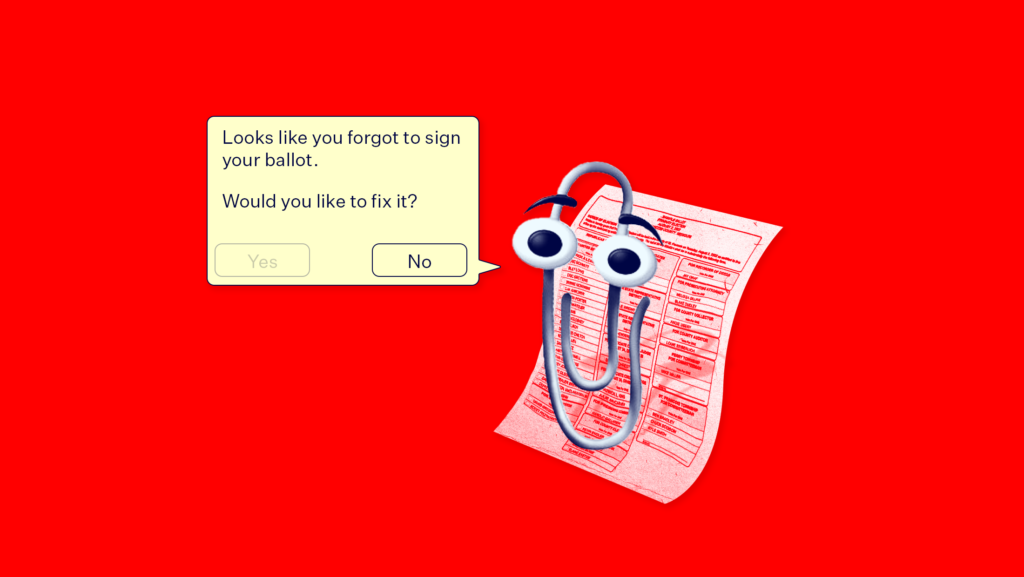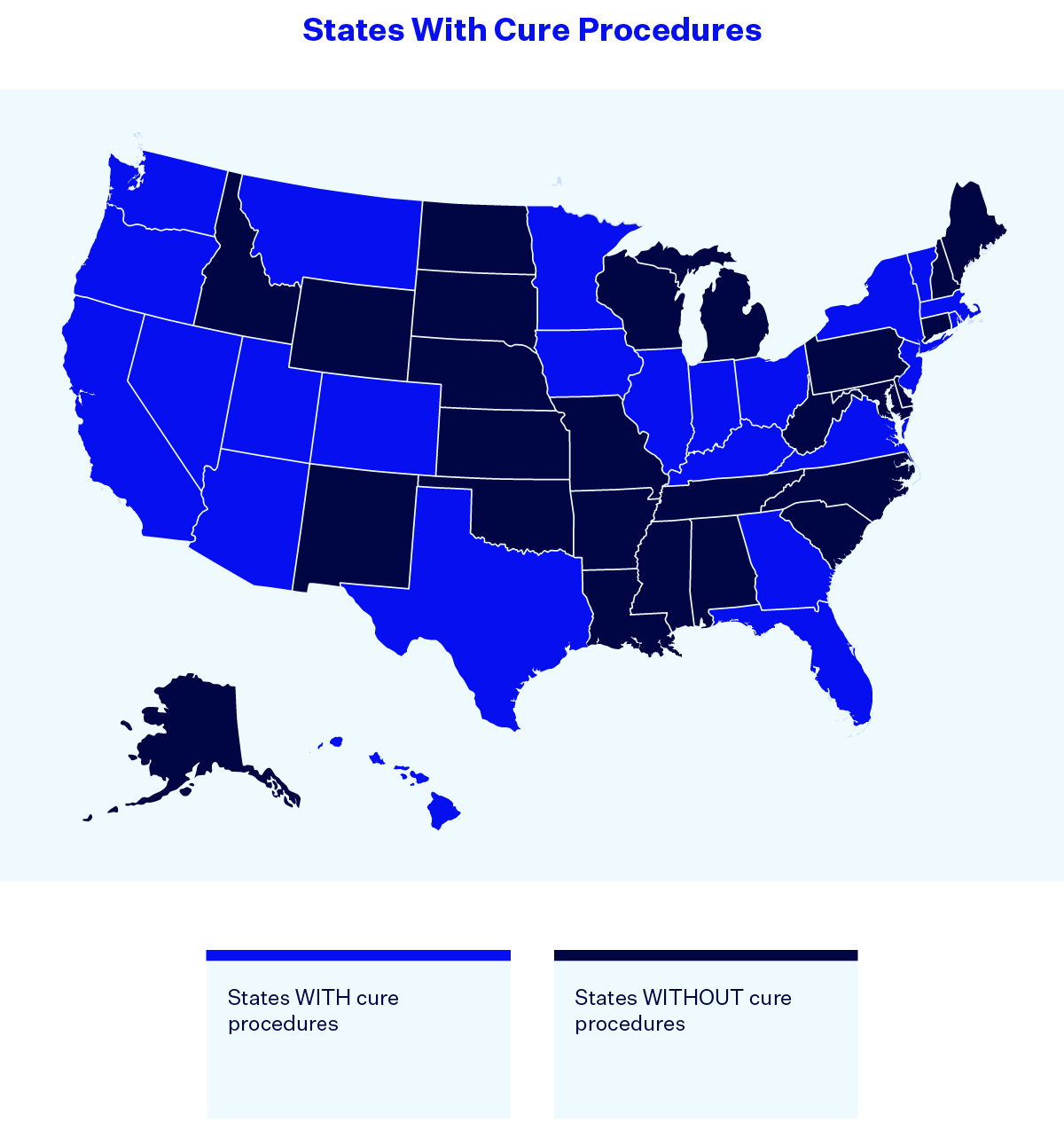Correcting Mistakes on Your Ballot? The RNC Says No.

In 2020, millions of voters cast mail-in ballots believing their votes were counted. But, in fact, over 560,000 of those ballots — nearly 1% of the total cast — were rejected.
Ballots are rejected for a range of errors. Certain mistakes can’t be cured (or fixed), like if a mail-in ballot is returned after the state’s deadline. Other mistakes can, and should, be remedied. Signature matching — when elections officials compare a voter’s signature on their ballot to the one on their voter registration file — is a notoriously unreliable method of verifying a voter’s identity but is an integral process in many states. A person’s signature can change over time because of age, disability or something as simple as the type of writing utensil used. Other common rejection reasons include: missing witness signatures or addresses, missing dates, ballots with stray marks, failure to place ballots into secrecy envelopes or voting for more candidates than permitted.
Curing is the process of notification and correction that allows voters to fix trivial mistakes and ensure their votes are counted. Currently, 24 states have cure procedures, which typically require elected officials to notify voters of their error and provide them an opportunity to correct it. What kind of mistakes are deemed curable and the timeline for voters to fix those errors varies from state to state.

In Texas’ Senate Bill 1, the omnibus election law enacted in 2021, one provision requires voters to put their driver’s license number, personal identification number or the last four digits of their Social Security number on their mail-in ballot applications. The problem is that number has to match the one they used when originally registering to vote — creating a guessing game for voters. In the March 2022 primary election, the statewide rejection rate surged to 12% compared to a 1% rejection rate in the 2020 presidential election. Additionally, Asian, Latino and Black voters’ mail-in ballots were rejected at higher rates than their white counterparts. Without proper cure options, laws like S.B. 1 can disenfranchise a significant segment of voters.
Litigation has pushed states to improve their cure procedures. After the 2018 midterms, Florida’s signature matching and cure processes were challenged in court. This case prompted lawmakers to update the state’s guidelines, ensuring that voters received notice of a problem with their signature and extending the time period during which the voters could cure the flagged ballots. More recently, in July 2022, a federal court issued a decision expanding absentee voting notice and cure procedures in New York. Previously, New York — which had the third highest rejection rate of mail-in ballots in the country in 2020 — rejected mail-in ballots for what the state deemed “uncurable” reasons, but were actually technical issues not connected to a voter’s eligibility.
Several decades ago, curing required elected officials to call or send out mailers notifying voters of their mistakes; corrections had to occur in person or by mail. Now, according to Vote.org, 46 states have statewide online ballot tracking platforms. Text messages and emails can notify voters and give them the opportunity to verify their identity in novel ways.
In Colorado, for example, Secretary of State Jena Griswold (D) announced a program in 2020 called TXT2Cure. “Mail ballots have increased participation tremendously in Colorado,” Griswold explained. “While our mail ballot rejection rates due to signature discrepancy are low, a disproportionate number of young people are impacted. TXT2Cure will help ensure more Colorado voices are heard.” The innovative option, which specifically aims to help young voters cure mistakes, requires voters to text the word “COLORADO” to a certain number, then voters will receive a link to cure their mail-in ballots by signing the screen of their mobile phone or taking a photo of an acceptable ID.
Griswold knows that it is better for voters and better for democracy when as many valid ballots as possible are counted. National Republican organizations are determined to have the opposite impact in this year’s midterm elections.
On Sept. 1, the Republican National Committee (RNC), National Republican Congressional Committee, National Republican Senatorial Committee and Republican Party of Pennsylvania filed a lawsuit in Pennsylvania challenging the authority of county boards of elections to develop and implement mail-in ballot cure procedures. The state of Pennsylvania does not have cure procedures outlined in its election laws, so the RNC and company argued that the absence of statewide cure guidelines translates to a prohibition of curing at the county level.
If Pennsylvania voters are without recourse to fix small errors, a potentially significant number of mail-in ballots could be rejected in this swing state. That’s what the GOP wants. Recent polling shows how former President Donald Trump’s fervent opposition to mail-in voting has influenced Republican voters’ attitudes against mail-in voting. According to the Associated Press, as of Oct. 14, “nearly 1.2 million voters had applied for a mail-in ballot, with applications from registered Democrats outnumbering Republicans by an almost 4-to-1 ratio” in Pennsylvania.
Fortunately, on Sept. 29, a Pennsylvania court denied the RNC’s motion to stop election boards from implementing cure procedures for the 2022 elections. The Pennsylvania Supreme Court affirmed this ruling a few weeks later, meaning Pennsylvania voters who live in counties with cure procedures will be able to fix minor errors on their mail-in ballots in the midterm elections.
However, Pennsylvania is notorious for rejecting “naked” mail-in ballots — completed ballots that have been placed directly into return envelopes and are missing the outer secrecy envelopes — and several counties refused to certify mail-in ballots with missing dates during the 2022 primary election. National Republican groups are trying hard to exploit this, filing another lawsuit on Oct. 16 that seeks to invalidate Pennsylvania state guidance ordering election officials to count undated or incorrectly dated mail-in ballots (ballots that are valid and timely cast but missing a date or with an incorrect date on their outer return envelopes).
The GOP is on a mission to prevent the counting of otherwise valid mail-in ballots that contain trivial and easily correctable mistakes. The Republicans groups behind the cure lawsuit made their intentions abundantly clear, writing that “cure procedures implemented by some Boards have had and will have the result of counting votes that should not have been counted.”